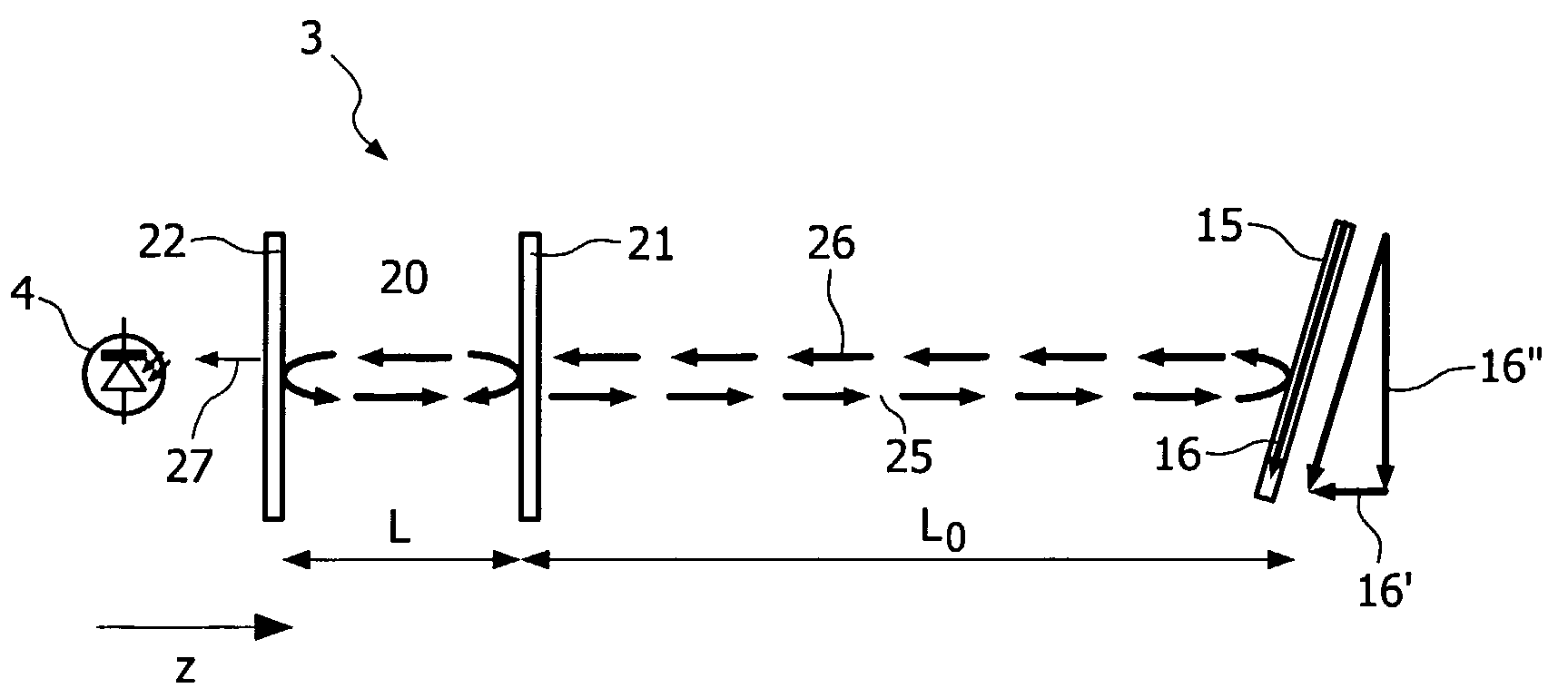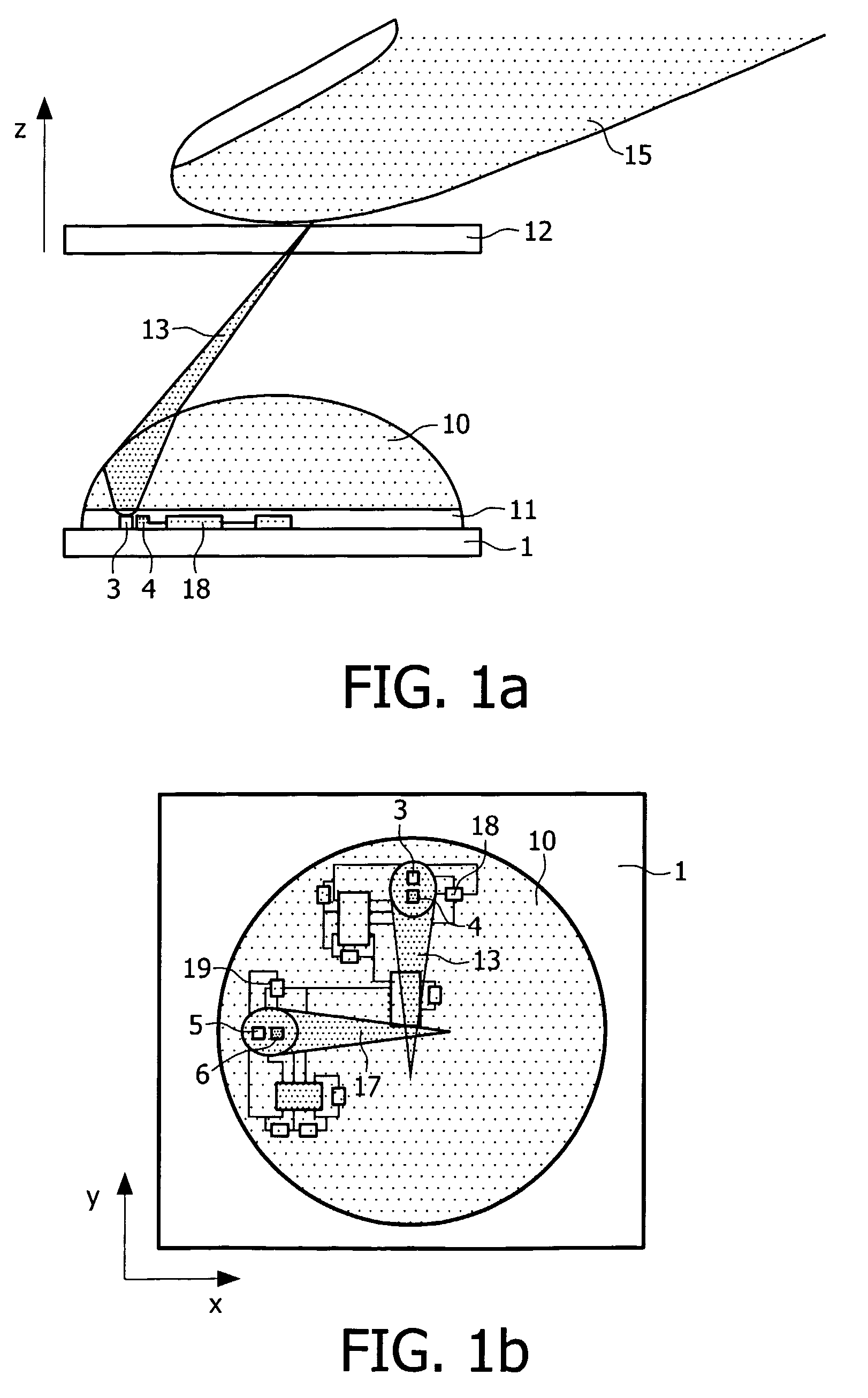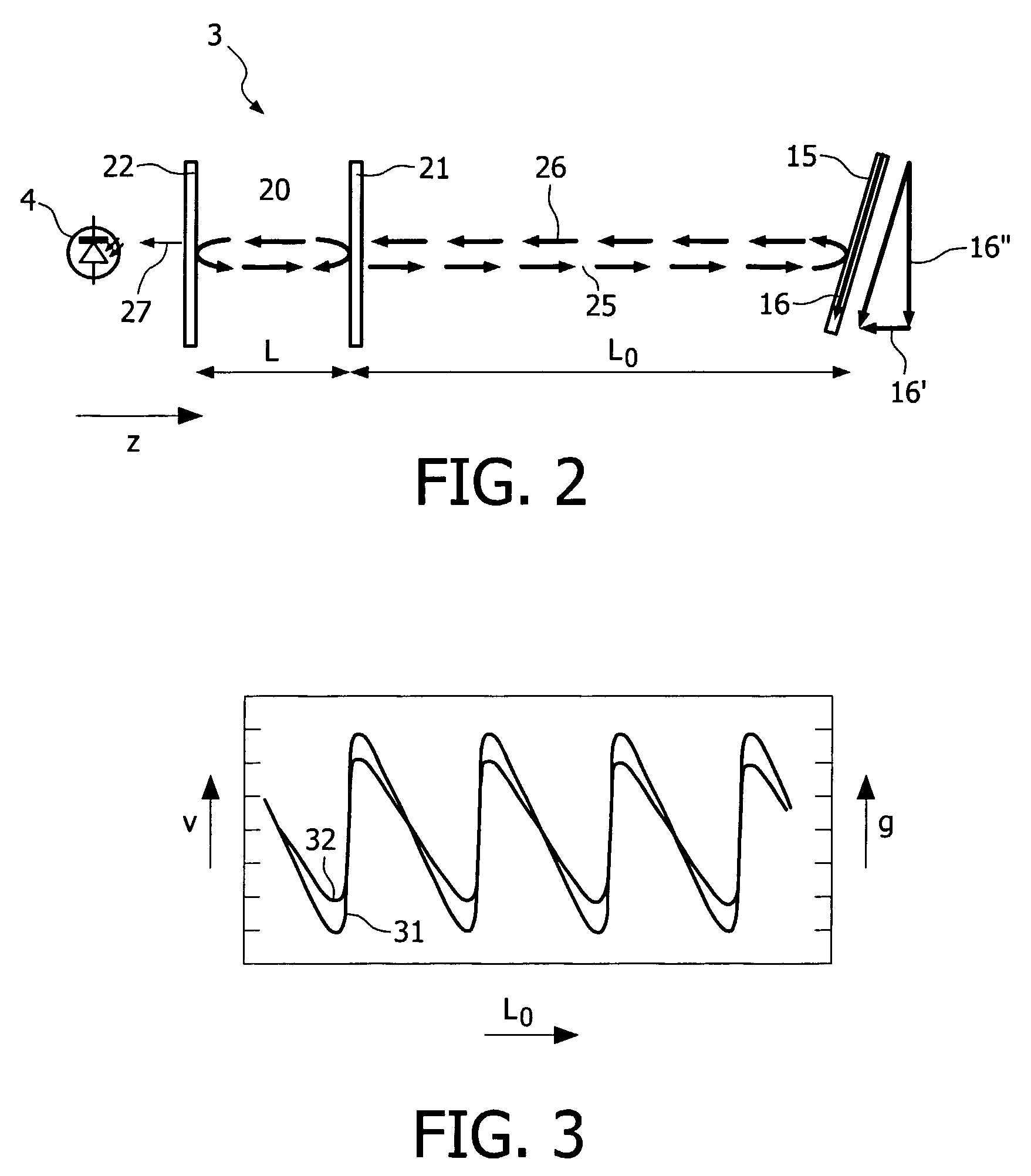Laser measurement apparatus using self-mixing effect
a technology of laser measurement and self-mixing, which is applied in the direction of optical radiation measurement, instruments, tubes with screens, etc., can solve the problems of self-mixing effect becoming so small that it cannot be detected in a reliable way, and self-mixing effect may fall below the detection threshold
- Summary
- Abstract
- Description
- Claims
- Application Information
AI Technical Summary
Benefits of technology
Problems solved by technology
Method used
Image
Examples
first embodiment
[0072]FIG. 4b shows a portion of an input device according to the invention wherein use is made of the aspherical characteristic of a lens 50. Use can be made of the natural asphericity of a lens, because of the large angles at which the beam rays; especially the outer rays are incident on the lens surface. Purely for illustrative purpose the rear surface 54 of the lens 50 is represented as being flattened to a certain degree, i.e. radius of curvature of the refractive surface 54 is larger than the radius of curvature of the front refractive surface 53 to denote asphericity. The boundary rays from object point p1 and passing through lens 50 meet at point p3 in plane PL2, which is closer to the lens 50 than plane PL1. The central rays 43 and 44 passing through lens 50 meet at point p4 in plane PL3, which is farther from the lens than plane PL1 and the intermediate rays passing through lens 50 meet at point p5 between points p3 and p4 and in this embodiment near plane PL1. The lens 50...
second embodiment
[0073]FIG. 4c shows a portion of an input device wherein use is made of asphericity. The asphericity of lens 60 is opposite to that of lens 50 in FIG. 4b. This opposite asphericity can be obtained by shaping the rear refractive surface 64 of lens 60 as a combination of spherical and wedge shape. This lens deflects the rays in a way opposite to the way the rays are deflected by the lens 50. The boundary rays passing through lens 60 meet at point p6 near plane PL3, which is farther from the lens than plane PL1, whilst the central rays meet at point p7 in plane PL2, which is close to the lens than plane PL1. The intermediate rays meet at point p8 in plane PL1. Also for lens 60 holds that the size of the spot formed by it in any plane in the range ΔZ will be substantially constant.
[0074]FIG. 5 shows the effect the lens of FIGS. 4a, 4b and 4c, respectively has on the laser self-mixing effect. The self-mixing effect Sme is plotted along the vertical axis in arbitrary units and the Z-posit...
PUM
 Login to View More
Login to View More Abstract
Description
Claims
Application Information
 Login to View More
Login to View More - R&D
- Intellectual Property
- Life Sciences
- Materials
- Tech Scout
- Unparalleled Data Quality
- Higher Quality Content
- 60% Fewer Hallucinations
Browse by: Latest US Patents, China's latest patents, Technical Efficacy Thesaurus, Application Domain, Technology Topic, Popular Technical Reports.
© 2025 PatSnap. All rights reserved.Legal|Privacy policy|Modern Slavery Act Transparency Statement|Sitemap|About US| Contact US: help@patsnap.com



